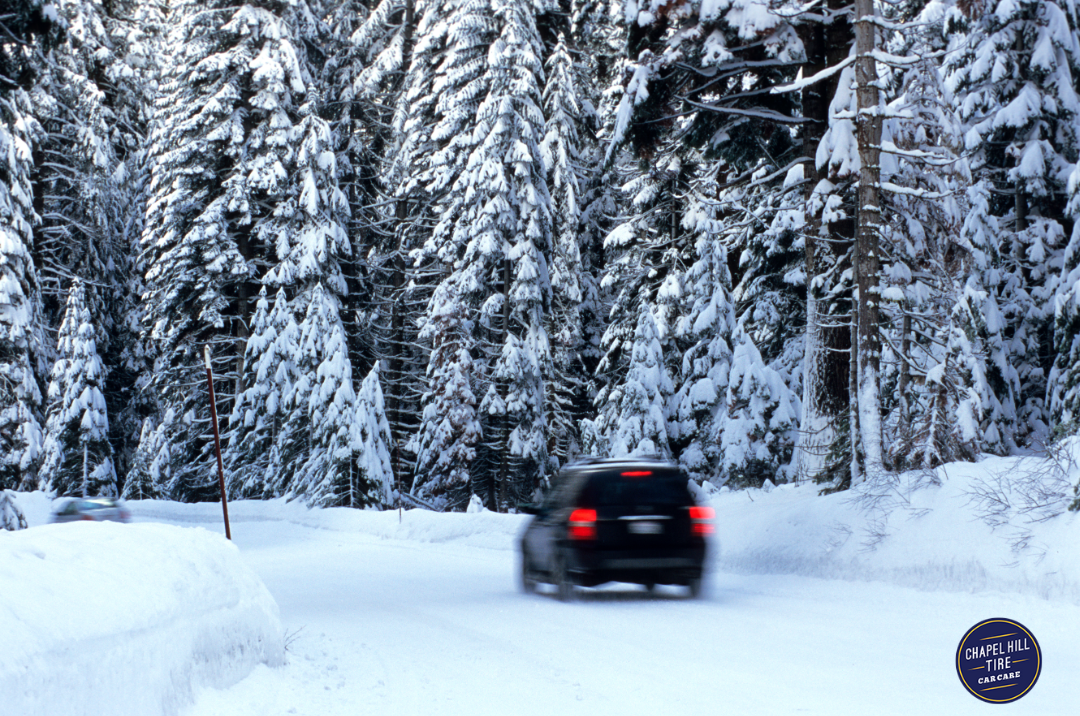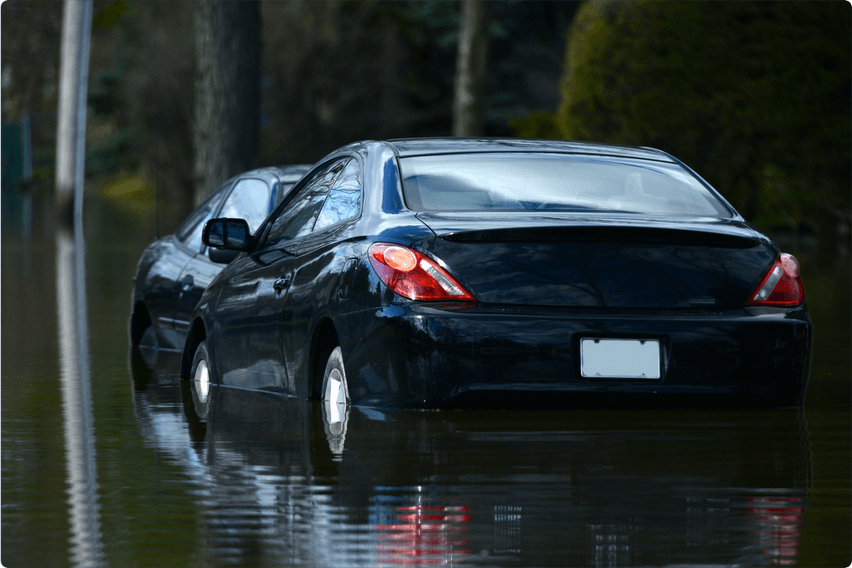If you have run-flat tires, you might be wondering if it’s safe to patch them after they’ve been punctured. While some run-flat tires can be repaired safely, they often need to be replaced for a variety of reasons. As you decide whether you should get a run-flat repair or a full tire replacement, review our guide about how far you can drive on run-flat tires and whether you should try to repair them.
What Are Run-Flat Tires?
Run-flat tires refer to tires that are designed to be driven on for a short distance after they’ve been punctured. If you get a flat while driving and you have run-flat tires, you can drive on the flat while you take your vehicle to a repair shop or a safer location.
The two main types of run-flat tires are self-supporting run-flat tires and support ring run-flat tires. A run-flat with a self-supporting system contains a reinforced sidewall that supports the car even when there’s air loss. In contrast, run-flats with a support ring system usually feature a ring of hard rubber that can support a vehicle’s weight following air loss.
Can You Drive on a Run-Flat Tire?
You can drive on a run-flat tire after a puncture, but you’ll need to follow your manufacturer’s recommendations for how far and how fast you can drive.
How Far Can You Drive on a Run-Flat Tire?
In general, run-flat tires are only designed to be driven on for about 50 miles after a puncture. While you drive on a punctured run-flat tire, it’s also recommended that you keep your speed at or under 50 mph. That being said, some run-flat tires may have a different maximum distance or speed guidelines, so always check your tires’ manufacturer’s recommendations as well.
Even though most run-flat tires will take you 50 miles, you’ll damage your tire and its internal structure the longer you drive on them. Driving the full 50 miles could also further damage your wheel and its parts. Instead of trying to get the full 50 miles out of your punctured run-flat tire, drive slowly while you take your car to the closest repair shop to avoid further damage to the tire and its wheel.
Can You Patch a Run-Flat Tire? Can You Plug a Run-Flat Tire?
You can sometimes patch or plug a run-flat tire that’s been punctured, but whether it can be repaired will depend on the tire’s manufacturer and the extent of the damage. Most tire manufacturers allow at least one repair of their run-flat tires, but some may invalidate your tire’s warranty if you try to repair it.
In terms of damage, a run-flat tire has a higher chance of being repairable if it’s been punctured by a small object, like a nail. Typically, a small puncture is repairable as long as you only drove a short distance after the puncture and the tire hasn’t been extensively damaged during the drive to the repair shop.
If your tire has lost all its air pressure or the tire has extensive internal or external damage, you’ll almost always need to replace it. Additionally, like other tires, a run-flat tire can only be repaired if the puncture is located in the middle of the tire. If the puncture is near the shoulder of the tire, patching or plugging it won’t be effective.
What Run-Flat Tires Can Be Repaired by Manufacturer?
Run-flat tire manufacturers have different recommendations for whether their tires can be repaired. While you should always double-check whether a manufacturer’s recommendations have changed, you can review the main tire manufacturers’ policies about repairing run-flat tires below:
- BFGoodrich: Repairs of BFGoodrich run-flat tires are permitted, with the manufacturer stating they have a one-repair maximum.
- Bridgestone: Repairs of Bridgestone run-flat tires are permitted, with the manufacturer stating they can only be repaired if the tire has maintained at least 15 PSI.
- Continental: Repairs of Continental run-flat tires are not recommended, with a repair invalidating any of their tire warranties.
- Dunlop: Repairs of Dunlop run-flat tires are permitted, with the manufacturer stating they have a one-repair maximum.
- Firestone: Repairs of Firestone run-flat tires are permitted, with the manufacturer stating they can only be repaired if the tire has maintained at least 15 PSI.
- Goodyear: Repairs of Goodyear run-flat tires are permitted, with the manufacturer stating they have a one-repair maximum.
- Hankook: Repairs of Hankook run-flat tires are permitted.
- Kumho: Repairs of Kumho run-flat tires are permitted.
- Michelin: Repairs of Michelin run-flat tires are permitted, with the manufacturer stating they have a one-repair maximum.
- Pirelli: Repairs of Pirelli run aren’t recommended.
- Yokohama: Repairs of Yokohama run-flat tires aren’t recommended.
When your run-flat tire manufacturer does allow their run-flats to be repaired, you should keep in mind that your tire will still need a comprehensive interior and exterior inspection before any repairs. If the inspection reveals extensive damage, you’ll likely need to replace your tires. Never try to repair a run-flat tire if an inspection has deemed it unrepairable, as it could put your safety at risk while you drive and damage your vehicle.
Choose Chapel Hill Tire for Run-Flat Tire Repair Services in the Triangle
If you’re looking for run-flat tire repair services in Durham, Raleigh, Chapel Hill, or the surrounding Triangle area, Chapel Hill Tire can help. Our team of certified mechanics can perform a full inspection on your run-flat tires to determine whether they’re repairable or need to be replaced. When your run-flat tire is beyond the point of repair, our tire finder tool makes it easy to find new tires, and our team can provide you with recommendations before installing them.Learn more about our tire patch and tire services today. If you need one of our tire repair or replacement services, please make an appointment at one of our convenient locations in the Triangle area. You’ll also want to check out our coupons to see how much you can save on our services!


